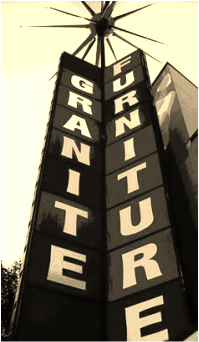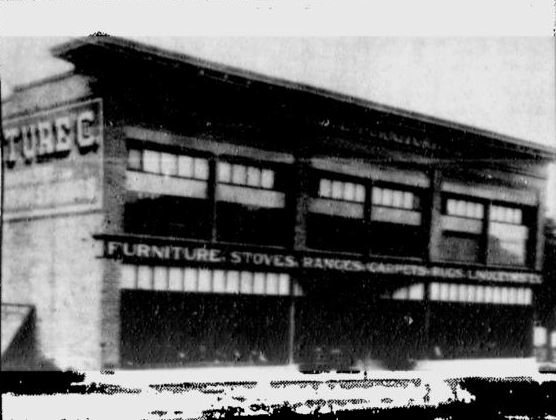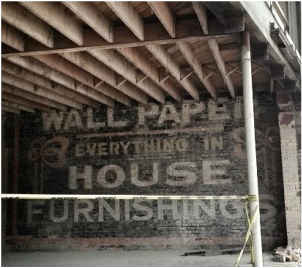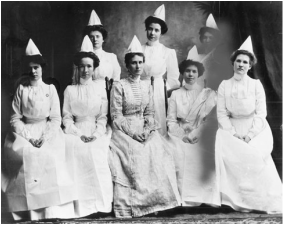Talking Yourself Down and Talking Yourself Up (aka: Fighting the Two-Headed Dragon of Insecurity)4/30/2016  This article was originally posted in Women Writers, Women's Books. Insecurity, covered with writhing, glinting scales, is a dragon – a truly frightening creature. But here’s the worst part: the dragon has two heads. The battle against the beast begins the moment you put your fingers to the keyboard with serious intent. Your intent is to be a writer. A writer in the wool-stocking, coffee-gesturing, perfect prose-composing, awesome smartness you imagine all writers possess. The dragon opens one sleepy eye. He blinks indulgently and, immediately, you wither into your own thoughts: Is this paragraph clunky? Is this character likable? Does the motivation ring true? What if I suck? Time to talk yourself down. It’s the only way to continue. The weapons vary from writer to writer, and the war will be waged in your own mind, but you must fight…or the dragon will win. When I decided to quit dabbling and actually start writing, I sought out posts and articles dealing with the care and keeping of this particular dragon, and consumed them whole. I needed to celebrate my progress rather than determining I still wasn’t good enough. I needed confirmation that other writers (already published, successful writers) were still entrenched with their own swords drawn because this battle wasn’t new. The weapon with the most rubies on the hilt and the shiniest blade, for me, was this: a small but mighty phrase by novelist and blogger, Chuck Wendig. His words were “once in a never.” I swung this phrase into the dark corners where my insecurity crouched, exhaling sulfur, leaving me no room to breathe. Here was my battle cry: “Most people write a book (even a bad book) once in a never!” I could finally pat myself on the back for how far I’d come. When I start worrying that the book won’t sell or my classmates will gossip at the reunion that it was rotten, I tell myself, “So what? Most people publish a book once in a never.” So I finished my book. I am on my way to publication. And, yes, I’m a little giddy. Okay, over the moon. I’m confident I’ve slayed the dragon because I have a contract, a cover, a title, and business cards. But there’s a small puff of smoke and then flame. The second head yawns, revealing a jaw full of dagger-sharp teeth. The insecurity wrinkles a ridged brow, sensing my weakness, because now I have to answer questions about my craft, about the book, to real people – readers. I want to sound interesting, but what if I’m not witty or unique? I want people to read the book, but what if they find it simple? Or boring? My first line of defense has been, and continues to be, self-deprecation. “Yes, I wrote a book. It was so much fun, so rewarding, you know? But it won’t win any literary awards.” OR “The book is women’s fiction, it’s uh, about women, nothing too complex.” OR “Here’s a business card with a picture of the cover on it. You can throw it away if you want, I have thousands.” “Stop!” I tell myself. If I can’t talk sweet about my own book, who will? I must be able to talk myself up! I wrote this book with my whole heart and the world should know I love it. But here’s the truth: I’m still struggling with this, even more as I creep toward publication. Because somewhere in my brain I believe if I reveal all the flaws about my book in advance, readers will know that I know it’s not perfect, and then they can’t criticize. I’m hedging my bets. Of course, this is all wrong. This is like dropping the diamond-encrusted blade on my own foot, leaving the dragon to nibble on my limbs. So, time to talk myself up. But this time I’ll be talking to an audience. It’s so daunting to toot one’s own horn without seeming braggy, to post about achievements, to approach people I’ve long admired from afar and ask them to be my friend, to see me, to buy my book. Here’s my advice, and it’s so simple – take a deep breath and just do it. Hold on, that’s catchy. Someone should use that to sell shoes. But here’s what I discovered (am discovering). Other writers are so encouraging, so helpful, and so real. I can’t believe this community! I’ve never had a group of co-workers who support me like my writer friends, and most of them are people I’ve never met (in person). I’ve received critical feedback, advice, a place to lay my head on a virtual shoulder – all through my critique and Facebook friends. I was afraid to reach out, but when I did I was received with open arms. I have yet to receive feedback from actual readers (aside from my betas), nasty reviews on Goodreads, or to talk about my book in front of an audience. But it’s coming. I’m rehearsing my log-line so when people ask me about the book I don’t start with, “It’s no big deal, really…” Instead I’ll say, “Imagine a century-old house, the walls full of secrets. My book is a braided story about five women who inhabit this same historic home across decades. Their stories, loves and losses bind them to a place they all call home. You should totally read it. And I’d love to visit your book club.” And I won’t stammer or blush (much). The dragon will rest. At least for a minute or two.
0 Comments
 Root, Petal, Thorn traces the stories of five fascinating women who inhabit the same historic home in Salt Lake City over the course of a century — braided stories of love, heartbreak, and courage connect the women, even across generations. In the late 1990s when my husband, Chris, and I moved into our new (old) home in Sugar House, one of the oldest ‘suburbs’ in Salt Lake City, our realtor advised us that our neighborhood was on the cusp of a change. As he unceremoniously put it, "Your neighbors will be either newlywed or nearly dead." And he was right. In those days, the retail center of the historic Sugar House neighborhood consisted of empty streets, crumbling store fronts, and cratered asphalt parking lots. Only a few eclectic places, which smelled of musty basement, had survived the blight. And in the middle of it all, on the most prominent corner, stood Granite Furniture. Since we were expecting our first child, and committed to our new neighborhood, we decided to purchase all of our baby accoutrements at the outdated store. Wandering through the empty showroom (and followed a little too closely by our over-eager salesperson), we tried our best to ignore the ragged schoolhouse carpeting, faded and patched where display furniture had been moved and rearranged over the decades. Chris may have whispered something about chalk outlines of a long-forgotten crime scene. And I may have giggled. Although it was clear that decades had slipped by without a face-lift for the old girl, the bones of the place were good. The store was an aging starlet. Granite Furniture opened in Sugar House in 1910. It was built when the small community consisted only of coal yards, feed stores, a library, a fire station, and a sugar mill – an enterprise intended to produce sugar from sugar beets. Interesting fact: the mill never produced any sugar, but it gave the community its name. The basement was dug using teams of horses, and the entire structure was raised for a total construction cost of $12,000. The front of the brick building was painted to advertise its contents: Furniture, Stoves, Ranges, Carpets, Rugs. As new houses were built nearby, Granite Furniture rode the wave of prosperity. And by 1964, the store had undergone eleven expansions and the showroom/warehouse was a voluminous 330,000 square feet. (Salt Lake Tribune) About that time, however, newer suburbs further south of the city became the hot place to live. In a freshly built split-level, families could get a built-in dishwasher, an attached garage, and oodles of closet space. In contrast, the dwellings in Sugar House were out of date, the residents were aging, and their small rooms were already filled with furniture. Sales (and the neighborhood) began to decline. Back to my ‘90s nesting trip, as Chris and I approached the faded faux-brass and cracked-concrete exterior, the iconic Roto-Sphere Granite sign (pictured above) spun in halfhearted, buzzing-fluorescent, faded-turquoise enthusiasm. But that enormous gaudy star, with sixteen aluminum eight-foot-long spikes, was still a beauty – a testament to good times. When the sign was first installed in 1961, it was painted gold and was outlined with orange neon bulbs. The panels that spelled Granite were crimson. Just over 200 of these unusual signs were produced nationwide, and Granite Furniture was prosperous enough in the 1960s, to display one. (RoadsideArchitecture.com) Despite our hopeful purchases that day, my husband and I weren't able to save good old Granite Furniture, and the place was shuttered in 2004. However, our realtor’s prediction about Sugar House came true. By 2011, the retail center was booming once again, and the Granite Block was retrofitted and rebuilt to house restaurants, art galleries, and live/work spaces. The Roto-Sphere sign was updated to advertise the new trendy occupants. During the face-lift, I ducked under the chain-link fence to snoop behind the orange cones and hard hat barriers. Behind the faux exterior, painted on the original brick store front, and hidden from the public for decades, it still read: Furniture, Stoves, Ranges, Carpets, Rugs. At that moment, I knew I must include Granite Furniture in the novel I was writing. I loved the idea that one antiquated furniture store could touch the daily lives and beloved homes of so many families throughout the decades. You see, the furniture we buy to fill our rooms is intimate. It is a statement about who we are and personal taste, but these are also the items that surround us when we relax, love, and live – which is the reason I wove this historic retail outlet into several of the stories in my novel Root, Petal, Thorn.  Westminster College is a liberal arts university located smack dab in the middle of my neighborhood. Founded in 1857, the college moved in 1913 to the current-day campus, in the heart of a new neighborhood called Sugar House, and opened its doors to students. 1913 was also a pivotal year in my novel ROOT, PETAL, THORN. The little bungalow, the common ground of the story, was built in 1913. Though Westminster is not my alma mater, the gorgeous campus has played a large role in my life. 1) This is not my proudest memory, but as a foolish high school student I was with several people who had been drinking vodka mixed with Mountain Dew in Big Gulp cups (don't judge). I won't say if I was a participant, but I will say I was glad the driver in our party had not been drinking and had the wherewithal to pull over so a person (who shall not be named) could barf. Right in the flower beds of the Westminster Loop. 2) As a University of Utah student who commuted forty minutes each day to campus, I would drive by Westminster about half-way into my journey and wish I went to school there, because it would mean I wouldn't be late to my first class. During those days, the gorgeous brick building was painted a dismal Pepto-Bismol pink to combat the ivy threatening to topple the awe-inspiring towers. 3) When I moved back to Salt Lake City, I was determined to live in the Sugar House neighborhood. I am so happy I can hear the Westminster chimes peal a seasonal tune at noon and five each day. If I'm gardening, I track my hourly progress with the resonant tone which heralds the hour. I know for whom the bell tolls. It tolls for me. 4) Westminster College also figures prominently into the lives of three women in ROOT, PETAL, THORN. Emmeline graduates from the nursing program in 1916, a member of the first class taught on the new Sugar House campus. In 1969, Lainey works on campus and one part of her prescribed therapy for manic-depressive disorder is to walk to and from her job. And Ivy, we must not forget Ivy. Her beloved husband, Adam, is killed in an auto-pedestrian accident near the main building, Converse Hall. His death is the catalyst in the novel, the event that leads Ivy to the stories of the other women who shared her common ground. Over the course of a century, like Ivy, these women lived and loved in the little brick bungalow. |




 RSS Feed
RSS Feed